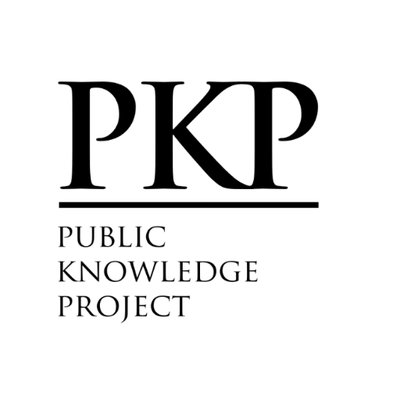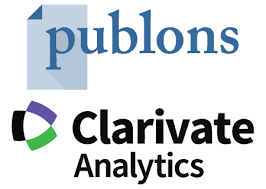Caractéristiques des conseils d'administration et performance des entreprises publiques
le cas du Cameroun
DOI :
https://doi.org/10.59051/joaf.v15i2.837Mots-clés :
Conseil d'administration, Performance, Sociétés publiques, Chiffre d'affaires, Parties prenantes, Entreprises publiquesRésumé
Objet : Cette étude examine le lien ou l’association entre les caractéristiques des conseils d’administration et la performance dans les entreprises publiques au Cameroun.
Méthode : L’on a utilisé les techniques de régression des moindres carrés généralisés (GLS) associées aux équations d’estimation généralisées (GEE). Les données utilisées dans cette étude sont extraites de la banque de données de la Commission Technique de Réhabilitation (CTR) des entreprises du secteur public laquelle est logée au ministère des Finances (MINFI).
Résultats : la proportion de femmes administratrices a une influence positive et significative sur la performance des entreprises publiques. Le nombre de réunions tenues par le conseil d’administration est significativement et positivement associé à la performance des entreprises publiques. Par ailleurs, la proportion d’étrangers n’a pas d’association avec la performance des entreprises publiques.
Originalité / pertinence : cet article est initié à la faveur de la promulgation par le Chef de l’Etat du Cameroun des lois No 2017/010 et 2017/011 du 12 Juillet 2017 portant statut général des entreprises publiques précédées par le décret No 2019/320 du 19 Juin 2019 précisant les modalités d’application des lois suscitées, tout ceci en remplacement de la loi de 1999. Au vu de l’évolution de l’environnement socioéconomique, il était devenu urgent de revisiter cette ancienne loi afin d’adapter la gestion de ces entités avec les nouvelles réalités du New Management Public. Ces entreprises sont contre performantes et sont généralement sous perfusion de l’Etat. Revisiter le cadre normatif et interroger l’effectivité du décret d’application sont des éléments qui ont présidé à ce programme de recherche qui comporte d’autres axes.
Téléchargements
Références
Adams R. and Ferreira D. (2009), «Women in the Boardroom and their Impact on Governance and Performance», Journal of Financial Economics, Vol. 94, No. 2, pp. 291–309.
Agrawal A. and Knoeber C. (1996), «Firm Performance and Mechanisms to Control Agency Problems between Managers and Shareholders», Journal of Financial and Quantitative Analysis, vol. 31, no. 3, pp. 377–397.
Allini A., Manes Rossi F. and Hussainey K. (2016), «The Board's Role in Risk Disclosure: An Exploratory Study of Italian Listed State-Owned Enterprises», Public Money & Management, vol. 36 No. 2, pp. 113-120.
Bär M., Niessen A. and Ruenzi S. (2008), «The Impact of Team Diversity on Mutual Fund Performance», working paper, Centre for Financial Research, University of Cologne, Cologne.
Barney J. B. (1991), « Firm Resources and Sustained Competitive Advantage», Journal of Management, vol. 17, pp. 25-50.
Bekolo C. (1995), « La relance des entreprises publiques au Cameroun: une approche par la libéralisation », Actualité Scientifique, paris, pp. 29-38.
Benz M. and Frey B.S. (2007), «Corporate Governance: What can we Learn from Public Governance? », Academy of Management Review, Vol. 32 No. 1, pp. 92-104.
Bohren O. and Strom R. (2007), «Aligned Informed and Decisive: Characteristics of Value Creating Boards», working paper, Norwegian School of Management, Oslo.
Brandenburger A.M. and Stuart H. W. Jr. (1996), «Value-Based Business Strategy», Journal of Economics and Management Strategy, vol. 5, no 1, pp. 5-24.
Brennan N. (2006), «Boards of Directors and Firm Performance: Is There an Expectations Gap? », Corporate Governance: An International Review, 14(6), pp. 577-593.
Calabrò A., Torchia M. and Ranalli F. (2013), «Ownership and Control in Local Public Utilities: The Italian case», Journal of Management and Governance, Vol. 17, No. 4, pp. 835–862.
Carter D. A., Betty J. S. and Gary S. W. (2003), «Corporate Governance, Board Diversity, and Firm Value», Financial Review, vol. 38(1), 33-53.
Charreaux G. (2007), « La valeur partenariale : vers une mesure opérationnelle...», Comptabilité - Contrôle - Audit 2007/1 (Tome 13), p. 7-45.
Charreaux G. and Desbrières P. (1998), « Gouvernance des entreprises : valeur partenariale contre valeur actionnariale», Finance Contrôle Stratégie, Vol. 1, n° 2, pp. 57 – 88.
Cheng L. T. W., Chan R. Y. K. and Leung T. Y. (2010), « Management Demography and Corporate Performance: Evidence from China», International Business Review, vol. 19(3), pp. 261-275.
Conger J., Finegold D. and Lawler, E. (1998), «Appraising Boardroom Performance», Harvard Business Review, vol. 76, pp. 136-148
Darmadi S. (2011). «Board Diversity and Firm Performance: The Indonesian Evidence» Corporate Ownership and Control, vol. 9(1), pp. 524-539.
Edem O. and Noor A. (2014), «Board Characteristics and Company Performance: Evidence from Nigeria», Journal of Finance and Accounting, vol 2, no 3, pp. 81-89
Eklund J. E., Palmberg J. and Wibery D. (2009), «Ownership Structure, Board Composition and Investment Performance», Working Paper, Centre for Excellence for Science and Innovation Studies. Stockholm.
Freeman R. E. (1984), Strategic Management: A Stakeholder Approach. Boston: Pitman.
Freeman R. E., Wicks A. C. and Parmar B. (2004), «Stakeholder Theory and The Corporate Objective Revisited», Organization Science, vol 15(3), pp. 364–369.
Friedman A. and Miles S. (2002), «Developing Stakeholder Theory», Journal of Management, Vol. 39 No. 1, pp. 1-21.
Gregory-Smith I., Brian G. M. and Charles A. (2012), «Appointing Women to the Board in the UK» Working Paper.
Hambrick D. C. and Mason P. A. (1984), «Upper Echelons: The Organizations as a Reflection of its Top Managers», Academy of Management Review, vol. 9(2), pp. 193 – 206.
Heath J. and Norman W. (2004), «Stakeholder Theory, Corporate Governance and Public Management: What can the History of State-Run Enterprises Teach us in the Post-Enron Era? », Journal of Business Ethics, Vol. 53 No. 3, pp. 247-265.
Hillman A. J., Canella A. A. and Paetzold R. L. (2000), «The Resource Dependency Role of Corporate Directors: Strategic Adaptation of Board Composition in Response to Environmental Change», Journal of Management Studies, vol. 37(2), pp. 235–255.
Jensen M. C. (1986), «Agency Costs of Free Cash Flow, Corporate Finance, and Takeovers», The American Economic Review, vol. 76, no. 2, pp: 323-329.
Jensen M. C. (1993), «The Modern Industrial Revolution, Exit, and the Failure of Internal Control Systems», Journal of Finance, vol. 48, pp. 831–880
Jensen M. C. (1993), «The Modern Industrial Revolution, Exit, and the Failure of Internal Control Systems», Journal of Finance, vol. 48, pp. 831–880
Johnson E.I. (2005), «The Role Model of the Board: A Preliminary Study of the Roles of Icelandic Boards», Corporate Governance: An International Review, 13(5), pp. 710-717.
Johnson J. L., Daily C. M. and Ellstrand A. E. (1996), «Boards of Directors: A Review and Research Agenda», Journal of Management, vol 22(3), pp. 409–438.
Lipton M. and Lorsch J. (1992), «A Modest Proposal for Improved Corporate Governance», Business Lawyer, vol. 48(1), 59-77.
Modigliani F. and Miller M. H. (1963), «Corporate Income Taxes and the Cost of Capital: A Correction», The American Economic Review, vol. 53, no. 3, pp: 433-443.
Ongore V. O., K’Obonyo O. P., Ogutu M. and Bosire M. E. (2015), «Board Composition and Financial Performance: Empirical Analysis of Companies Listed at the Nairobi Securities Exchange», International Journal of Economics and Financial Issues, Vol. 5, No. 1, 2015, pages 23-43
Pfeffer J. (1972), «Size and Composition of Corporate Boards of Directors: The Organization and its Environment». Administrative Science Quarterly, vol 17(2), pp. 218–228.
Pfeffer J. and Salancik G. (1978), «The External Control of Organisations, A Resource Dependence Perspective. New York: Harper and Row.
Ponnu C. H. (2008), «Corporate Governance Structure and the Performance of Malaysia Public Listed Companies», International Review of Business Research Papers, 4(2), pp. 217 – 230.
Randoy T., Thomsen S. and Oxelheim L. (2006), «A Nordic Perspective on Corporate Board Diversity», Working Paper, Nordic Innovation Centre, Oslo.
Ross S. A. (1977), «The Determination of Financial Structure: The Incentive-Signalling Approach», The Bell Journal of Economics, PP: 23-40.
Salmon, W.J. (1993), «Crisis Prevention: How to Gear up Your Board», Harvard Business Review, 71(1), pp. 68-75.
Sanda A. U., Mukaila A. S. and Garba T. (2005), «Corporate Governance Mechanisms and Firm Financial Performance in Nigeria», AERC Research Paper, No 149.
Sundaram A. K. and Inkpen A. C. (2004), «The Corporate Objective Revisited», Organisation Science, vol. 15, No 3, pp. 263-281
Touna Mama. and Tamba I. (1996), «Crise et déréglementation dans le secteur des entreprises publiques et parapubliques», In crise économique et politique de déréglementation au Cameroun, Le Harmattan, page 135-193.
Vafeas N. (1999), «Board Meeting Frequency and Firm Performance», Journal of Financial Economics, vol. 53, pp. 113-142
Yermack D. (1996), «Market Valuation of Companies with a Small Board of Directors», Journal of Financial Economics, vol. 40(2), pp. 185-211.
Zahra S. A. and Pearce II J. A. (1989), «Boards of Directors and Corporate Financial Performance: A Review and Integrative Model», Journal of Management, vol. 15(2), pp. 291-334.
Téléchargements
Publié
Numéro
Rubrique
Licence
© Anaclet ANANGA ONANA 2024

Cette œuvre est sous licence Creative Commons Attribution - Pas d'Utilisation Commerciale - Pas de Modification 4.0 International.
Les auteurs qui publient dans cette revue acceptent les termes suivants :
- Les auteurs conservent le droit d'auteur et accordent à la revue le droit de première publication, l'ouvrage étant alors disponible simultanément, sous la licence Licence d’attribution Creative Commons permettant à d'autres de partager l'ouvrage tout en en reconnaissant la paternité et la publication initiale dans cette revue.
- Les auteurs peuvent conclure des ententes contractuelles additionnelles et séparées pour la diffusion non exclusive de la version imprimée de l'ouvrage par la revue (par ex., le dépôt institutionnel ou la publication dans un livre), accompagné d'une mention reconnaissant sa publication initiale dans cette revue.
- Les auteurs ont le droit et sont encouragés à publier leur ouvrage en ligne (par ex., dans un dépôt institutionnel ou sur le site Web d'une institution) avant et pendant le processus de soumission, car cela peut mener à des échanges fructueux ainsi qu'à un nombre plus important, plus rapidement, de références à l’ouvrage publié (Voir The Effect of Open Access).






















